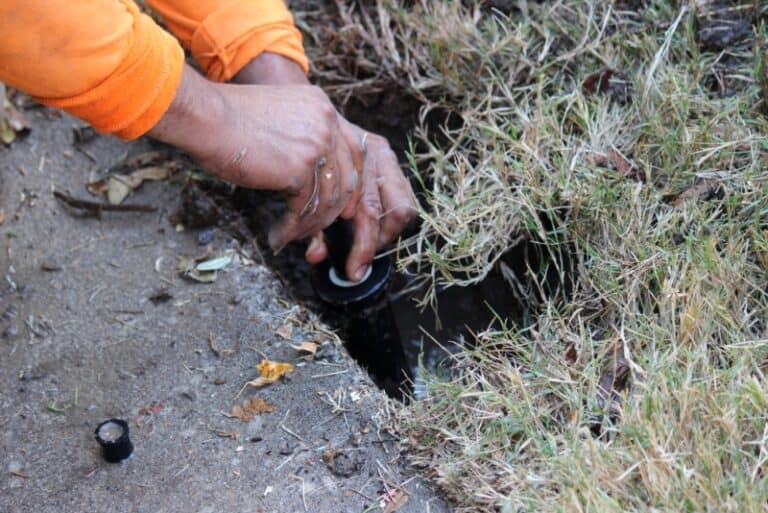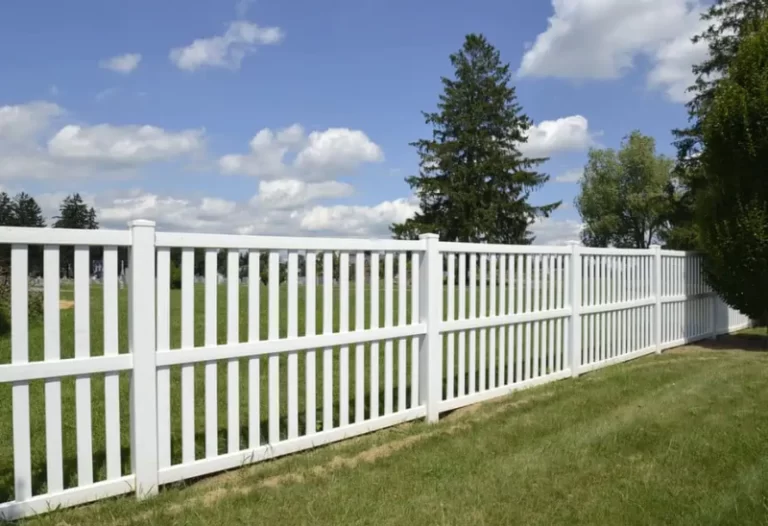How to Lower the pH Level of Your Grass Lawn

Having a healthy lawn requires more than just watering and mowing. You also need to ensure that your soil’s pH level is optimal for grass growth. The pH level measures how acidic or alkaline your soil is. Most grasses prefer slightly acidic soil with a pH between 6 and 7.
So, learning how to lower your grass pH level is crucial if you want a lush, green lawn. Luckily, it’s not difficult to do. Below, we will explain how to lower the pH level of your grass lawn step-by-step.
How to Lower Your Grass Lawn pH Level
It is crucial to maintain a healthy pH level in your grass lawn. The ideal pH level for grass is between 6.0 and 7.0. If the pH level of your grass lawn is too high or too low, it can cause problems for the grass. A high pH level can make it difficult for the grass to absorb nutrients from the soil. A low pH level can make the soil too acidic for the grass to grow.
There are a few different ways to lower the pH level of your grass lawn. You can use sulfur, aluminum sulfate, or iron sulfate. You can add organic matter, such as compost, to the soil.
What To Use to Lower the pH Level of the Lawn
There are a few different materials that you can use to lower the pH level of your grass lawn. Sulfur, aluminum sulfate, and iron sulfate are all effective at reducing the pH level. Below, we will give a breakdown of each material and how it works to lower the pH level.
Use Compost to Lower pH Levels
Adding organic matter to the soil is an excellent way to lower the pH level. Compost will also add nutrients to the soil that will benefit the grass. To use compost, spread it over the lawn and then rake it into the top layer of soil.
The reason compost lowers pH is that it is acidic. Acidic materials help to reduce the pH level of the soil. Compost is also full of nutrients that grass needs to grow.
Another advantage of using compost is that it will improve soil drainage. Soil that drains well is less likely to become waterlogged and compacted. Compost will also help to aerate the soil, which is essential for grass growth.
Using Sulfur to Lower pH Levels
Sulfur is a natural element that can lower the pH level of your grass lawn. It is available in powder or pellet form. To use sulfur, spread it over the lawn and then water it.
Sulfur is so effective at lowering pH levels because it is an acidic material. When added to the soil, sulfur will help reduce the pH level. Sulfur is also a nutrient that grass needs to grow.
Another advantage of using sulfur is that it will improve soil drainage. Soil that drains well is less likely to become waterlogged and compacted. Sulfur will also help to aerate the soil, which is vital for grass growth.
Aluminum Sulfate
Aluminum sulfate is a chemical that can lower the pH level of your grass lawn. It is available in powder or pellet form. To use aluminum sulfate, spread it over the lawn and then water it.
Aluminum Sulfate is effective because it is an acidic material. When added to the soil, aluminum sulfate will help lower the pH level. Aluminum sulfate is also a nutrient that grass needs to grow.
Another advantage of using aluminum sulfate is that it will improve soil drainage. Soil that drains well is less likely to become waterlogged and compacted. Aluminum sulfate will also help to aerate the soil, which is essential for grass growth.
Iron Sulfate
Iron sulfate is a chemical that can lower the pH level of your grass lawn. It is available in powder or pellet form. To use iron sulfate, spread it over the lawn and then water it.
Iron Sulfate is effective because it is an acidic material. Iron sulfate will help lower the pH level when added to the soil. Iron sulfate is also a nutrient that grass needs to grow.
Another advantage of using iron sulfate is that it will improve soil drainage. Soil that drains well is less likely to become waterlogged and compacted. Iron sulfate will also help to aerate the soil, which is vital for grass growth.
Why is it Important to Adjust Grass Lawn pH Levels?
It is essential to adjust the pH level of your grass lawn because the wrong pH level can cause problems for the grass. A high pH level can make it difficult for the grass to absorb nutrients from the soil. A low pH level can make the soil too acidic for the grass to grow.
A lower pH is often found in lawns that are shaded by trees. The leaves from the trees fall to the ground and decompose, lowering the soil’s pH. If you have a grass lawn that is not growing well, it could be because the pH level is off.
A higher pH is often found in lawns that receive a lot of sunlight. The sun causes the soil to become more alkaline over time. This is mainly because the sun breaks down organic matter into simpler compounds like leaves and twigs.
How to Determine pH Level
It is essential to test the soil before you add any amendments. You can purchase a soil test kit at your local nursery or garden center. Follow the kit instructions to collect a soil sample from your lawn. Then, follow the instructions on the kit to test the soil.
If the pH level of your soil is too high, you will need to add sulfur, aluminum sulfate, or iron sulfate. If the pH level of your soil is too low, you will need to add lime.
Tools You’ll Need to Measure pH Level
- Soil test kit
- Measuring spoons
- Garden hose
- Sprayer
- Sulfur, aluminum sulfate, or iron sulfate (if needed)
- Lime (if needed)
Lowering the pH level of your grass lawn is essential for the health of the grass. Use sulfur, aluminum sulfate, iron sulfate, or compost to lower the pH level. Be sure to test the soil before adding amendments, and always follow the manufacturer’s instructions. Lower the pH level every few years or as needed.
When to Test Soil
It is a good idea to test your soil at least once a year. You may need to test more often if you live in an area with a lot of rain or if you have a lot of plants.
Signs you need to test your soil:
- The grass is not growing well.
- The grass is a different color than usual.
- There are patches of dead grass.
- The grass is thin and sparse.
If you see any of these signs, it is time to test your soil.
What Makes Laws More Susceptible to Lower pH Levels?
A few factors make lawns more susceptible to having a lower pH level. If the soil is very sandy, it will be harder for the grass to get the nutrients it needs. Clay soils can also be difficult for grass to grow in because they can compact and form a hard crust on the surface. If your lawn gets a lot of shade, it may also be more susceptible to having a lower pH level.
If you have any of these factors in your lawn, you will need to test the soil more often and Lower the pH level as needed. Follow the manufacturer’s instructions when adding amendments to your lawn.
What Makes Laws More Susceptible to Higher pH Levels?
Lawns that receive a lot of sunlight are more susceptible to higher pH levels. The sun breaks organic matter down into simpler compounds like leaves and twigs. This can make the soil more alkaline over time.
If you have a sunny lawn, you will need to test the soil more often and Lower the pH level as needed. Follow the manufacturer’s instructions when adding amendments to your lawn.
Lower pH Level of Grass Lawn FAQs
How do I lower the pH in my lawn fast?
Aluminum Sulfate and Iron Sulfate are the fastest-acting amendments for lowering pH levels. For best results, follow the manufacturer’s instructions and water the lawn after applying the amendment.
Can I lower the pH of my lawn with vinegar?
Yes, you can use vinegar to lower the pH level of your lawn. However, it is more effective to use sulfur, aluminum sulfate, or iron sulfate.
Can I lower the pH of my lawn with coffee grounds?
Yes, coffee grounds can be used to lower the pH level of your lawn. However, they are not as effective as sulfur, aluminum sulfate, or iron sulfate.
What is the best way to Lower the pH of my lawn?
The best way to lower your lawn’s pH is to use sulfur, aluminum sulfate, or iron sulfate. These amendments are the most effective at Lowering pH levels.
You can also read:





